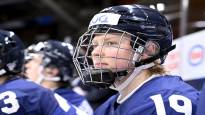For some reason, the evolution of the sport has been closed in Finland, writes Jussi Paasi.
Jussi Paasi sports reporter
Listen to ‘s Ice Hockey Tour here.
When the 17-year-old super promise Konsta Helenius returned from the World Junior Championships, a surprise awaited him in the first training sessions.
Helenius had caught the eye of a lion, so to speak.
– The national team has a slightly different puck. In training, I played it at first, and Olli immediately said that we skate here all the time.
The Olli in question is OJ, Olli Jokinen. Former NHL star, current head coach of Mikkelin Jukurie.
Jokinen has surprised everyone in his short coaching career. Due to its resources, Jukurit belongs to the small leagues of the SM league, but the team led by Jokinen has shown that it is not necessarily the euros that decide, but the quality of operations.
As I write this comment, Jukurit is third in the SM league. It’s a shockingly hard trick. What is it based on?
If the answer had to be given in one word, it would be: skating.
For someone who doesn’t know ice hockey, that might sound funny. Ice skating? Well, of course, because that’s what the whole sport is based on.
But why did Jokinen remind the NHL’s next summer’s top players that “we skate here all the time”? Let’s look at the question from another direction.
You don’t skate all the time in the national team.
And connected to that is one of the biggest challenges in Finnish ice hockey. Let’s put it bluntly: it’s a problem.
In Finland, the development of an individual’s sports skills has remained a secondary role in many clubs. For some reason, the evolution of the species has been blinded.
The NHL shows the direction here (too). Skating speed and skill are at the center of everything. If you can’t skate, you can’t play in the NHL.
And you don’t necessarily have to look all the way to the NHL. Excellent examples of the importance of skating were also seen in the youth World Cup tournament. The gold was won by the USA, which was the strongest and fastest team in skating at the Games.
Individual skills are emphasized even more. And the role of skating in individual skills is undeniable.
At the same time, for too long Härmä has been browsing the extra pages of playbooks and honing tactical patterns, even in the training sessions of elementary school-aged juniors.
It’s nuts.
Did the Lions’ success blind them?
In Finland, the Leijoni’s success seems to have blinded a surprising number of people into imagining that May’s World Cup gold would mean the international pinnacle of ice hockey. No. It is far from it.
In ice hockey tournaments, you might still manage – at least occasionally – with less skating. When the deciding games of the games are decided with the best-of-one system, almost anything can happen. It has almost nothing to do with where the real top of the world is in the puddle.
Under no circumstances should the guidelines for the future of ice hockey be drawn on the terms of the national teams. Sports skills should be by far the most important guideline for all activities – from the little ones to the top level.
And investing in skating, of course, does not eliminate the fact that in hockey, tactical matters also matter. At the heart of the game is rhythm at every moment. The rhythm is led by the coach, but it is created on the ice by the players, who recognize when to step on the gas and when not to.
It’s worth looking at what’s being done in the NHL again. There is even a surprisingly versatile game played there. Naturally, that includes the many game-related and game-tactical factors that are also seen in the domestic SM league.
But in the NHL, everything happens faster. And the reason is not only in a narrower trough. The explanation can be found, well, in skating.
I talked to several experts before writing this comment. One current SM league coach summed it up succinctly.
– We have to learn to coach and play a faster game.
Sounds simple. Jokinen Jukurit shows with its example how it is done in practice.
By skating.
